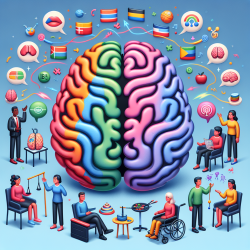Customizing Therapy Approaches: Lessons from Research
In the ever-evolving field of special education, practitioners are continually seeking ways to enhance their skills and improve outcomes for their students. One of the most insightful pieces of research in this domain is the article titled "What's good for the gander may not be good for the goose" by Kornblum (1993). This research underscores the importance of customizing therapeutic approaches to meet the unique needs of each individual.
The central thesis of the research is that a one-size-fits-all approach is often ineffective in therapy settings. What works well for one individual may not necessarily be beneficial for another. This concept is particularly relevant in special education, where students present a wide array of needs and challenges.
Key Takeaways for Practitioners
For practitioners looking to implement the outcomes of this research, consider the following strategies:
- Individualized Assessment: Begin with a thorough assessment of each student's unique needs, strengths, and challenges. This will provide a foundation for tailoring interventions that are more likely to succeed.
- Flexible Interventions: Develop a repertoire of strategies and interventions that can be adapted to suit different students. Flexibility is key to addressing the diverse needs of students effectively.
- Continuous Monitoring: Regularly evaluate the effectiveness of the interventions being used. Be prepared to make adjustments based on the student's progress and feedback.
- Collaboration: Work closely with other educators, therapists, and families to gain a comprehensive understanding of the student's needs and to ensure a consistent approach across different environments.
Encouraging Further Research
While the research by Kornblum provides valuable insights, it also opens the door for further exploration. Practitioners are encouraged to engage in their own research to identify what works best in their specific contexts. This could involve conducting small-scale studies, participating in professional learning communities, or collaborating with academic researchers.
By continually seeking new knowledge and refining their practices, practitioners can make a significant impact on the lives of their students. The ultimate goal is to provide therapy that is not only effective but also empowering for each individual student.
To read the original research paper, please follow this link: What's good for the gander may not be good for the goose.










